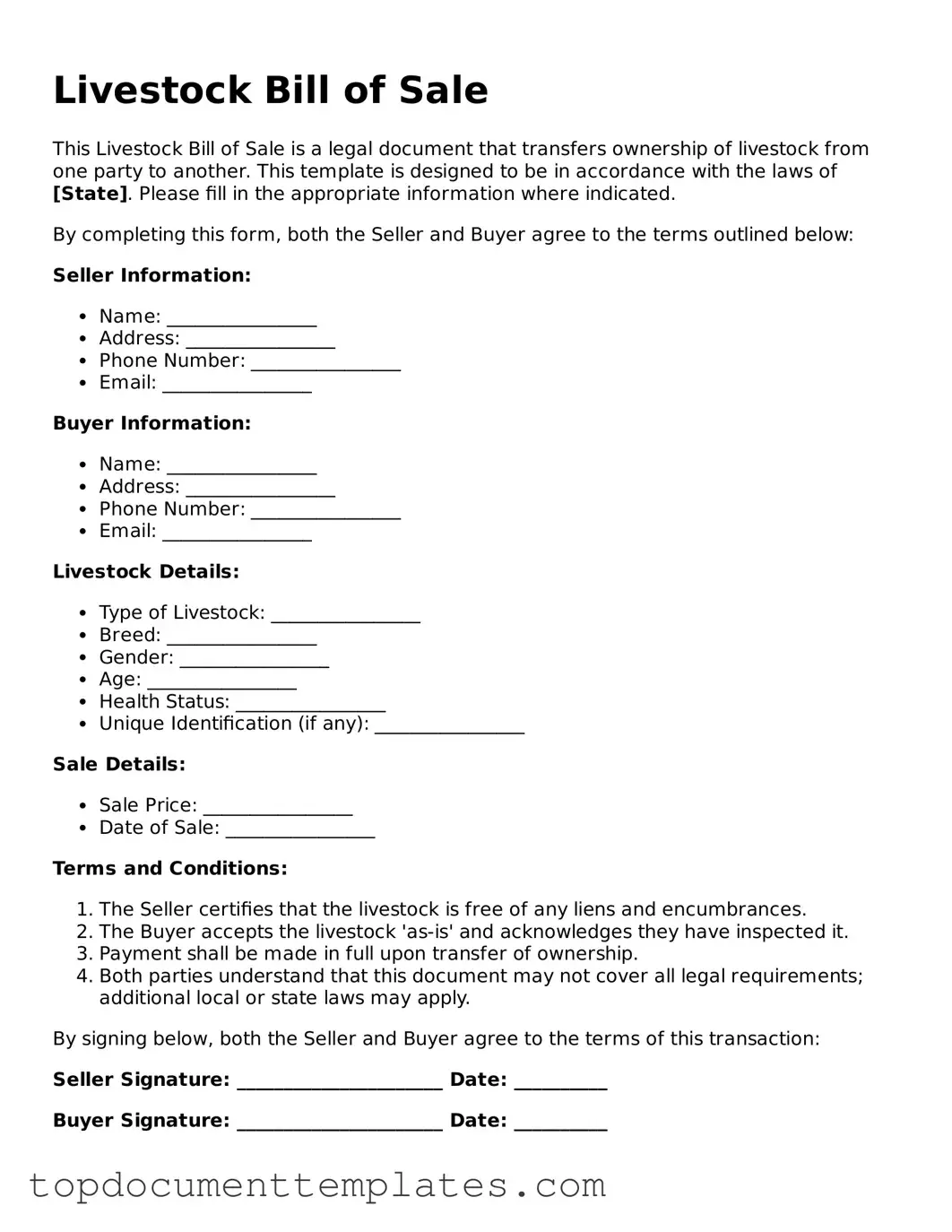Official Livestock Bill of Sale Template
A Livestock Bill of Sale form is a legal document that records the transfer of ownership of livestock from one party to another. This form serves as proof of the transaction and includes essential details such as the buyer's and seller's information, a description of the livestock, and the sale price. To ensure a smooth transfer process, it is important to fill out the form accurately; click the button below to get started.
Open This Form
